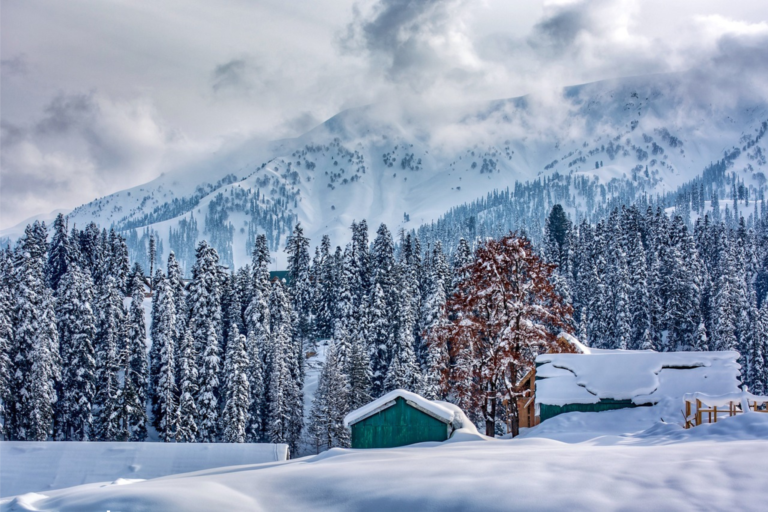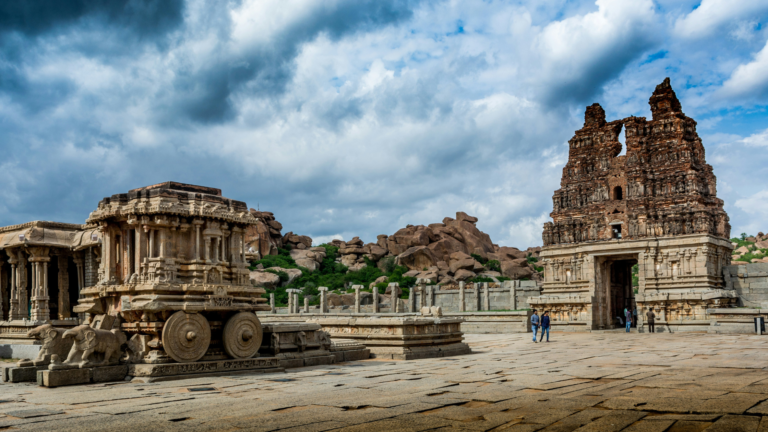India is home to some of the world’s most diverse ecosystems, offering unforgettable wildlife experiences for nature lovers and adventure seekers alike. From the dense jungles of Central India to the rugged landscapes of the Himalayas, India’s national parks and wildlife reserves provide a sanctuary for exotic animals and rare bird species. If you’re passionate about exploring the wild, here’s a guide to the best wildlife safaris in India that promise an encounter with the country’s rich biodiversity.
1. Ranthambore National Park – Rajasthan
Ranthambore National Park is one of India’s most famous wildlife reserves, known for its Bengal tiger population. Located in Rajasthan, the park offers scenic landscapes with ancient ruins, dense forests, and picturesque lakes, making it a top destination for spotting tigers in their natural habitat.
- Key Attractions:
- Bengal Tigers: Ranthambore is one of the best places to see tigers in India.
- Historic Ruins: The park is dotted with ancient forts and temples, adding a historical element to the safari.
- Bird Watching: Over 270 species of birds inhabit the park, including eagles and kingfishers.
Best Time to Visit: October to June
Safari Tip: Book a morning safari for the best chance of spotting tigers as they are most active during dawn.
2. Jim Corbett National Park – Uttarakhand
Established in 1936, Jim Corbett National Park is India’s oldest national park and a premier destination for tiger safaris. Nestled in the foothills of the Himalayas, Corbett offers beautiful landscapes and a variety of safari zones to explore.
- Key Attractions:
- Royal Bengal Tigers: Known for its healthy tiger population, especially in the Dhikala zone.
- Elephant Safaris: Take a unique ride through the jungle on an elephant’s back.
- Corbett Waterfall: A scenic spot within the park ideal for relaxation and bird watching.
Best Time to Visit: November to June
Safari Tip: Stay overnight in the Dhikala Forest Lodge inside the park for a more immersive experience.
3. Kaziranga National Park – Assam
Kaziranga National Park in Assam is a UNESCO World Heritage Site and a haven for the Indian one-horned rhinoceros. The park’s swampy grasslands, thick forests, and proximity to the Brahmaputra River create a rich habitat for a variety of wildlife.
- Key Attractions:
- One-Horned Rhinoceros: Kaziranga is home to two-thirds of the world’s one-horned rhino population.
- Elephants, Tigers, and Wild Buffaloes: The park is part of India’s Big Five safari animals.
- Bird Watching: Spot rare species like the greater adjutant stork and ferruginous duck.
Best Time to Visit: November to April
Safari Tip: Opt for an early morning elephant safari to get close to the rhinos in the grasslands.
4. Bandhavgarh National Park – Madhya Pradesh
Bandhavgarh is known for its high tiger density and is considered one of the best places in India to spot a tiger. This park in Madhya Pradesh also has ancient ruins and lush greenery, making it a captivating safari destination.
- Key Attractions:
- Bengal Tigers: The park boasts a high concentration of tigers.
- Bandhavgarh Fort: A historical fort that offers a beautiful view of the jungle below.
- Leopards and Sloth Bears: Besides tigers, Bandhavgarh is home to various mammals like leopards and bears.
Best Time to Visit: October to June
Safari Tip: Book safaris in the Tala zone, known for the highest number of tiger sightings.
5. Kanha National Park – Madhya Pradesh
The inspiration behind Rudyard Kipling’s The Jungle Book, Kanha National Park is known for its lush meadows, dense forests, and diverse wildlife. The park’s landscape is ideal for spotting tigers, leopards, and the rare barasingha (swamp deer).
- Key Attractions:
- Barasingha (Swamp Deer): Kanha is known for its successful conservation efforts for this species.
- Tigers and Leopards: The park is well-known for tiger and leopard sightings.
- Bamni Dadar (Sunset Point): Offers scenic views of the sunset over the park.
Best Time to Visit: October to June
Safari Tip: Visit the Kanha and Mukki zones for a better chance of spotting wildlife.
6. Sundarbans National Park – West Bengal
The Sundarbans is the world’s largest mangrove forest and home to the elusive Royal Bengal tiger. This UNESCO World Heritage Site, located in West Bengal, is known for its unique swamp ecosystem and thrilling boat safaris.
- Key Attractions:
- Royal Bengal Tigers: Known for tigers that are adapted to swimming in the mangroves.
- Boat Safaris: Explore the waterways of Sundarbans and spot wildlife from a boat.
- Estuarine Crocodiles: The park is also home to crocodiles and various bird species.
Best Time to Visit: November to March
Safari Tip: Book a guided boat safari to increase your chances of seeing tigers and crocodiles in the mangroves.
7. Periyar Wildlife Sanctuary – Kerala
Located in Kerala’s Western Ghats, Periyar Wildlife Sanctuary is famous for its lush greenery, scenic lake, and elephant population. The sanctuary offers a unique experience where visitors can explore the forest on boat rides.
- Key Attractions:
- Elephants: Periyar is well-known for its large elephant population.
- Periyar Lake: Take a boat safari on the lake to view animals coming to drink water.
- Bird Watching: Spot diverse bird species including Malabar hornbills and kingfishers.
Best Time to Visit: October to March
Safari Tip: Early morning boat rides offer the best chance of spotting wildlife along the water’s edge.
8. Gir National Park – Gujarat
Gir National Park is the only place in the world where you can find Asiatic lions in their natural habitat. Located in Gujarat, the park’s dry deciduous forest is ideal for lion sightings.
- Key Attractions:
- Asiatic Lions: Gir is the only sanctuary for Asiatic lions.
- Leopards, Hyenas, and Jackals: The park is also home to a variety of other predators.
- Kamleshwar Dam: Known for its population of marsh crocodiles.
Best Time to Visit: December to April
Safari Tip: Book a Jeep safari for the best chance of spotting Asiatic lions and other wildlife.
9. Nagarhole National Park – Karnataka
Part of the Nilgiri Biosphere Reserve, Nagarhole National Park in Karnataka is known for its dense forests and a high population of elephants. The park’s lush landscape is also home to tigers, leopards, and Indian bison.
- Key Attractions:
- Elephants: The park is renowned for frequent elephant sightings.
- Kabini River: Spot wildlife along the river banks.
- Tigers and Leopards: Nagarhole has a healthy population of big cats.
Best Time to Visit: October to May
Safari Tip: Try a boat safari along the Kabini River for a unique perspective of the park’s wildlife.
10. Tadoba Andhari Tiger Reserve – Maharashtra
Tadoba, also known as the Land of Tigers, is Maharashtra’s largest national park and is famous for its high density of tigers. The rugged terrain and beautiful lakes make it a stunning destination for wildlife enthusiasts.
- Key Attractions:
- Bengal Tigers: Tadoba is well-known for frequent tiger sightings.
- Tadoba Lake: A scenic spot that attracts various animals for drinking water.
- Sloth Bears and Wild Dogs: Besides tigers, Tadoba is home to sloth bears, leopards, and wild dogs.
Best Time to Visit: October to May
Safari Tip: Book your safari in advance, as Tadoba is gaining popularity among wildlife photographers and tourists.
Conclusion: Experience India’s Wild Side
India offers some of the best wildlife safari experiences in the world, with national parks and wildlife reserves that protect diverse ecosystems and exotic species. Whether you’re looking to spot a majestic tiger, observe elephants in their natural habitat, or enjoy bird watching, India’s top wildlife safaris provide unforgettable experiences for nature lovers. So, pack your binoculars, grab your camera, and get ready to explore the wild side of India.






